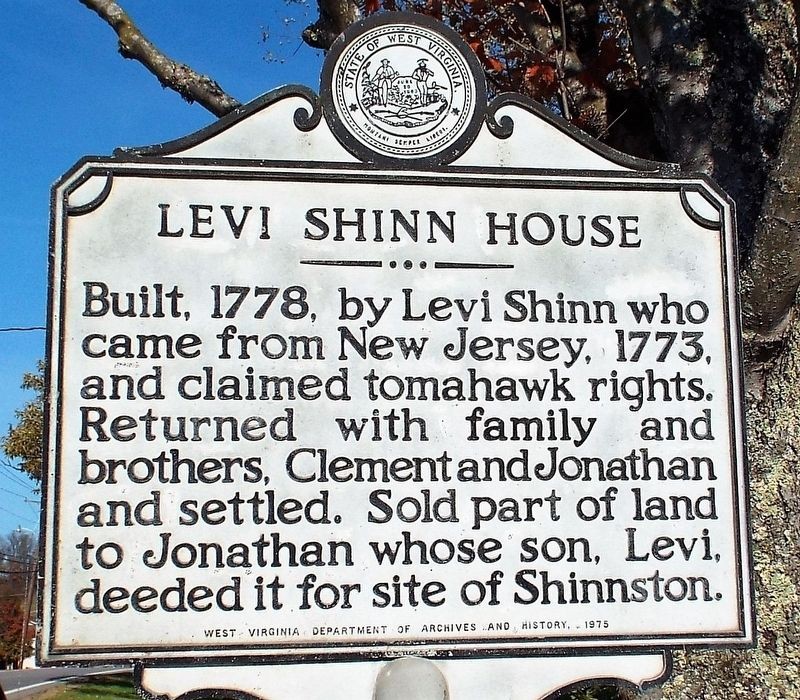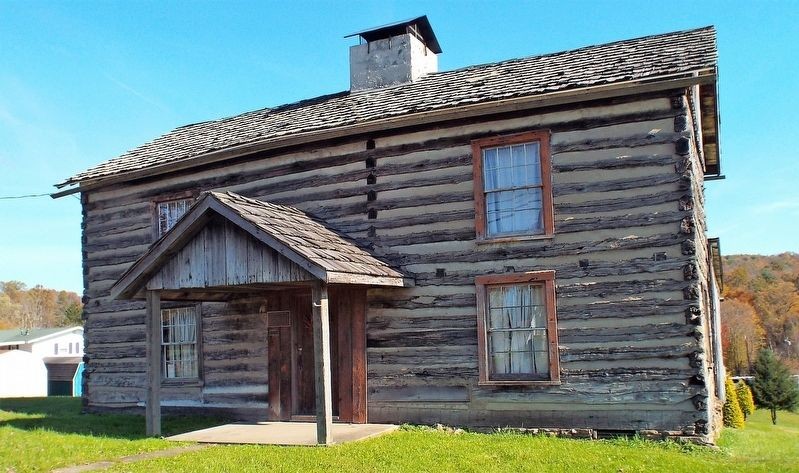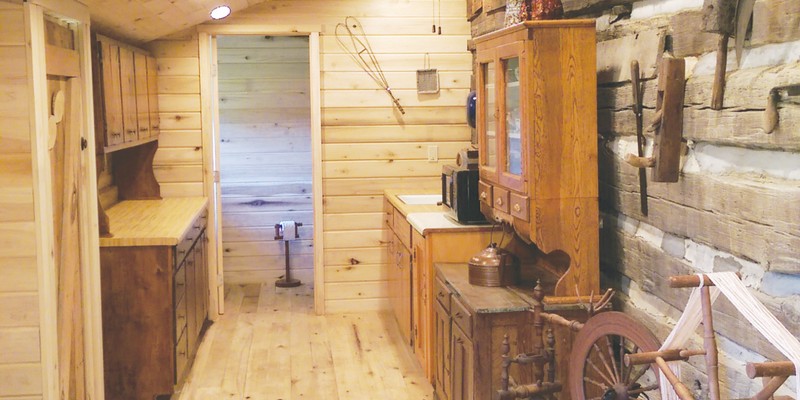Levi Shinn House and Highway Historical Marker
Introduction
Text-to-speech Audio
Images
The Levi Shinn House

Levi Shinn House Highway Historical Marker

The Levi Shinn House

Inside of the Levi Shinn House today

Backstory and Context
Text-to-speech Audio
The story of the Levi Shinn House begins with that of its builder and first owner. Levi Shinn was born and raised near the town of Burlington in the colony of New Jersey in 1748. He was one of seven children born to Clement Shinn and Elizabeth (Webb) Shinn. A Quaker and descendant of seventeenth-century English immigrants, Levi Shinn married Elizabeth Smith in 1772. Not long after, he and a younger brother set out for the western wilderness of the colony of Virginia. In 1773, Shinn laid claim to a 400-acre tract of land in the West Fork River Valley. He then left and did not return for a handful of years. In the meantime, Shinn moved with his family from New Jersey to Apple Pie Ridge near Winchester, Virginia. Accompanying him in the move south were some of his siblings and fellow Quakers from the Burlington area. In 1778, Shinn returned to his land claim in the West Fork River Valley and built a house for his family.
The house that Levi Shinn built in 1778 was rectangular in shape and two-and-a-half stories tall. Constructed of native hardwood hand-hewn logs packed with clay, it contained four large interior rooms with a central chimney that provided fireplaces for each room. The gabled roof allowed for a small storage attic. Beneath the house was a crude cellar. Today, the exterior of the house appears much as it did in 1778, with some exceptions. The small front covered porch, the attached rear kitchen, and the siding boards on the gable ends were added to the house by later owners. Unlike the exterior, the interior has undergone major modifications over the years, but the original beams, fireplaces, and rafters remain.
After construction on the house was complete, Levi Shinn returned to Virginia to fetch his wife and children and move them into their new home. While packing up his family’s belongings, he described the countryside surrounding his new home to the other Burlington area transplants living on Apple Pie Ridge. Captivated by Shinn’s description, some decided to join him in settling in the West Fork River Valley.
In the following decades, Levi Shinn increased his wealth and expanding his land holdings. In 1784, he acquired an additional 600 acres of land in the West Fork River Valley. By the next year, Shinn had built a grist mill. Both the land tract and gristmill would play an important role in the formation of the town of Shinnston. In 1793, Shinn sold the large land tract to his brothers, Clement and Jonathan. Years later, his brothers’ heirs sold the land. Over the years, it was
divided up and eventually became the land on which Shinnston now stands. Levi Shinn’s gristmill later became the focal point around which the fledgling settlement grew.
Levi Shinn lived out his remaining years as a prosperous farmer. In 1807, he died of natural causes. His eldest son, Clement, took ownership of the house and lived with his family there. Following Clement Shinn’s death in 1840, the house passed out of the family. In 1972, the Shinnston Historical Association acquired the Levi Shinn House. The organization made it their headquarters and transformed the first-floor rooms into a museum to showcase artifacts that belonged to the Shinn family. The following year, the house was placed on the National Register of Historic Places. Two years later, in 1975, the West Virginia Highway Historical Marker Program of the West Virginia Archives and History installed a marker dedicated to commemorate the building’s rich history. It stands in front of the house alongside U.S. 19 just south of Shinnston in Harrison County.
Sources
Capace, Nancy. The Encyclopedia of West Virginia. St. Clair Shores, MI: Somerset Publishers, Inc., 1999.
Golden, Lena and Jack Sandy Anderson. "Levi Shinn." Keeper of the Family. Web. 07 October 2020 <https://keeperofthefamily.com/stories/levi_shinn/>.
Haymond, Henry. History of Harrison County, West Virginia: From the Early Days of Northwestern Virginia to the Present. Morgantown, WV: Acme Publishing Company, 1910.
"Shinnston." e-WV: The West Virginia Encyclopedia. 19 June 2018. Web. 07 October 2020 <https://www.wvencyclopedia.org/articles/395>.
https://www.hmdb.org/m.asp?m=125817
https://www.hmdb.org/m.asp?m=125817
https://www.hmdb.org/m.asp?m=125817
https://shinnstonnews.com/historic-levi-shinn-house-in-shinnston-has-undergone-a-partial-makeover/
